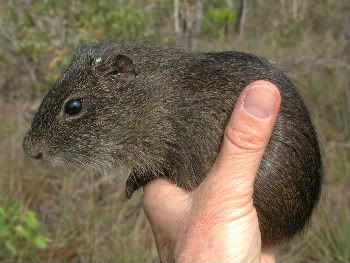Small mammal decline in Bolivia linked to burning Amazon
During ten years surveying small mammal populations in Bolivia’s cerrado, Dr. Louise Emmons with the Smithsonian Institute found that the mammals were suffering precipitous declines, even local extinctions. After ruling out the usual suspects—local fires, rainfall, and flooding—Emmons formed a novel hypothesis regarding the decline. Could a sudden lack of nighttime dew caused by the burning of the Amazon be the cause of the mammal decline? In the cerrado—a tropical region of grasslands and dry forest—Emmons watched as the Brazilian guinea pig Cavia aperea went locally extinct, and three other rodent species declined significantly: the South American giant rat Kunsia tomentosa, the Paraguayan Bolo mouse Necromys lenguarum, and the Huanchaca mouse Juscelinomys huanchacae. Surveying two different areas in the cerrado, Emmons found a nearly 96 percent decline in small mammals, from a high point of 232 individuals surveyed to a low of ten. In 2004 guinea pigs vanished entirely from the cerrado and have not returned. “Rodents everywhere quite normally undergo big changes in abundance, but numbers usually go up again following declines,” Emmons told Mongabay.com. “In our study, the rodents did not recover their numbers, and an important species, guinea pigs, seemingly went completely extinct. Often rodent abundances change with year-to-year changes in rainfall, but rainfall and other factors such as fire and flooding did not seem able to explain the decline that we saw.” Another change in the ecosystem, however, caught Emmon’s eye. “When the study began in 1998, we were soaked to the waist from dew on the grass, shoes squelching, each morning when checking savanna traps,” she writes in a paper published in Biotropica. “In later years the morning grass was usually dry.” …
Mysterious decline of small mammals in Bolivia may be linked to burning Amazon
